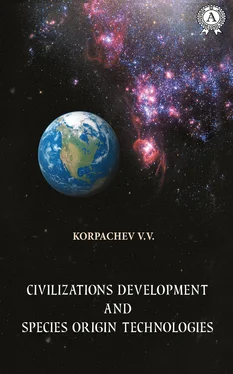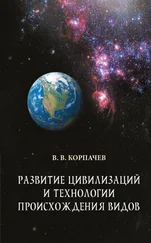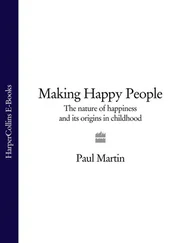James Jeans, the English astrophysicist, said in a similar way:
«Primitive cosmogonies presented the Creator working in time, forging the Sun and the Moon and stars from the already existing raw material. Modern scientific theory makes us think of the Creator working out of time and spaces, which are part of His creation, as well as the artist is out of his canvas».
Pascual Jordan, a German physicist, one of quantum mechanics’ founders, also noted that «Modern science has removed the obstacles that previously were between natural knowledge and religious worldview. Contemporary natural science no longer rebels against the Creator».
Thomas Edison, a well-known physicist-inventor answered the question of expediency in the world of atoms during an interview in the following: «Do you really think that it is done without any sense? The harmonious and useful combinations of atoms take beautiful and interesting shapes and colours, as if expressing their pleasure. In illness, death, decay, or decay, the disagreement of the compound atoms immediately manifests itself through the fetid odour. The atoms united in the known forms constitute the lower ranks’ animals. Finally, they are united in a man, who represents the complete harmony of meaningful atoms».
The same opinion was shared by William Herschel, the English astronomer: «The more the field of science is broadening, the more evidences of an Eternal Creative and Almighty Intelligence existence appear».
John Fleming, the English physicist and radio engineer, wrote on this occasion: «A great number of modern discoveries have completely destroyed the old materialistic ideas. Nowadays, the Universe appears before us today as a thought, but thought presupposes the presence of a Thinker».
Stephen Hawking, a modern theoretical physicist, wrote: «My studies of the Universe are in the boundary zone between science and religion, but I do my best to stay on the scientific side. It is quite possible that God acts in such a way that is not described by scientific laws, but in such a case, the person has to rely on its own faith. Even if there is only a single unified theory – it is just a set of rules and equations. What adds fire to the equations and creates the Universe to be described? The common scientific approach of a mathematical model constructing does not provide the answer to the question of why the universe should exist to be described by this model. Why does the Universe exist at all? (Stephen Hawking, A Brief History of Time: From the Big Bang to Black Holes, New York, 1988, 174).
I would like to finish this list of the famous scientists’ sayings with the final phrase of the «Origin of Species», the main paper by Charles Darwin. It reads as follows: «There is greatness in this view, according to which the Creator initially breathed life with its various manifestations into one or a limited number of forms; and while our planet is spinning, according to the unchanging laws of gravity, an infinite number of the most beautiful and most amazing forms has occurred and continues to occur from such a simple principle». He also noted in this book: «The world rests on regularities and in its manifestations is presented as a product of the Intelligence − this is an indication of its Creator».
The fact of the availability of a great number of the greatest scientists and thinkers of the human history’s different periods who speculated about the role of the Supreme Intelligence is an obvious incentive to analyze the most important issues of the life’s creation and functioning on Earth, the rationality and its planned creation not on the basis of the spontaneous development principle and, of course, not on the basis of religious beliefs.
1.8. NECESSITY OF NEW POINTS ON THE LIFE DEVELOPMENT ON EARTH
The evolutionary theory gave a huge impetus to the development of science, made it possible to accumulate huge factual material about the various species on Earth occurrence’s sequence within the process of their improvement. Therefore, all scientifi dogmas are viewed only from the standpoint of the evolutionary theory, despite its contradictory arguments and improvability. Being the only scientifi explanation of the origin of life, it argues that after millions of years since Earth had been formed, life occurred on it due to the pure chance, the development of which was performed in a natural way − from unicellular organisms to millions of various plants and animals that currently exist.
L. S. Berg (Берг Лев Семенович) expressed the need for evolutionary views’ reconsideration long time ago expressed in such scientific papers as «Nomogenesis or Evolution based on Regularities», «Works on the Theory of Evolution» and «Theory of Evolution». He compiled the vast factual material accumulated by the early twentieth century which testified the organisms’ natural variability within the evolutionary process and the organisms’ inherent initial practicability. In his opinion, as the result of the embryonic potentially available signs’ development and improvement the new, more complex forms are formed with time. The conclusion of the performative nature of evolution was the logical one. He provided the detailed and substantiated arguments in favour of the fact that, although it contradicts Daewin’s concept, evolution is not an accidental process but the naturally determined one in which chaotic mutations and natural selection have their own focus. In his opinion, the essence can be illustrated by a simple analogy: although the development of the individual organism is influenced by many random factors, there are no doubts that the inner information that is contained in the genes is the main and determining factor. The entire history of the body is the implementation of the program, which determines what will grow, for example, from the given seed, a birch or a pine. The whole biosphere’s evolution, according to Berg, is the «unfolding of a Law or multidimensional program, which contains numerous methods for its implementation. Therefore, Berg called his concept the nomogenesis (from the Greek. nomos – «law»), contrasting it to the Darwinian concept of tychogenesis, i.e. development that is based on chance. Berg did not discuss the question of the source of this law. In his opinion, a number of General biological phenomena suggest that the process of evolution cannot be described even in the qualitative aspect within the framework of Darwin’s diagram.
The principles of nomogenesis were briefly summarized in form of the table and contrasted with the Darwinism’s postulates as follows. If in Darwinism all organisms developed from one or few primary forms, in nomogenesis organisms developed from many thousands of primary forms; if in Darwinism the further development proceeded divergently, in nomogenesis it was predominantly convergent (partially divergent); while evolution in Darwinism is based on random variations that separate individuals undergo by means of slow, hardly noticeable continuous changes, in nomogenesis it is based on leaps and paroxysms, mutationally capturing the vast masses of individuals on a vast territory; if in Darwinism there are many hereditary variations and they go in all directions, in nomogenesis hereditary variations are limited in number and they go in certain directions; if in Darwinism the struggle for existence and natural selection serves the factor of progress, in nomogenesis the struggle for existence and natural selection are not factors of progress, but preserve the norm; if in Darwinism, species are connected with each other by transitions due to their origin by divergence, in nomogenesis species are sharply separated from each other due to their mutational origin; if in Darwinism the evolutionary process means entirely the new traits’ formation, in nomogenesis evolution is to a large extent the deployment of existing inclinations; if in Darwinism, the extinction of organisms occurs due to the external causes (the struggle for the existence and survival of the fittest), in nomogenesis, extinction is a consequence of both internal (autonomous) causes and external (choronomic).
Читать дальше












